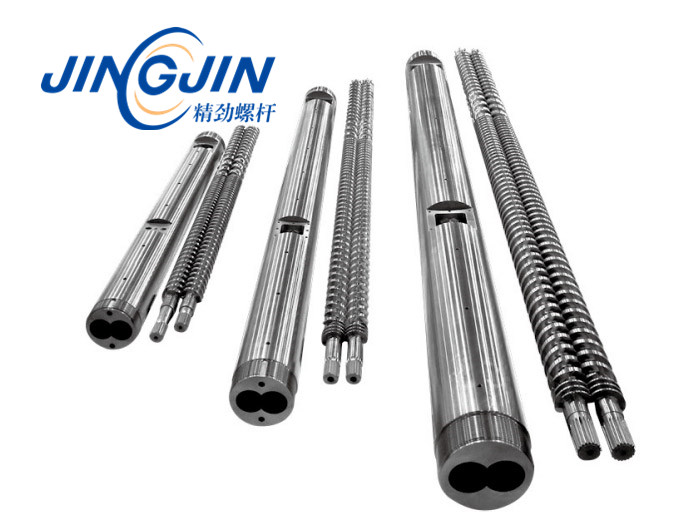In the past three years, in order to improve the wear r […]
In the past three years, in order to improve the wear resistance and corrosion resistance of the screw and barrel of the rubber extruder, our company has made great progress in the research on the corrosion resistance of the screw and barrel. The main manifestations are: The development of new materials for the screw and barrel, and the transplantation of new mechanical manufacturing technology and new heat treatment technology into the manufacturing process of the screw and barrel. The simple situation in this regard is: In the 1950s, medium carbon steel and alloy steel were mainly used for surface quenching, chromium plating, or chromium plating after quenching;
After that, alloy steel, nitrided steel and other materials were used for gas nitriding treatment; after entering the 1970s, in addition to the continuous use of nitrided steel for gas nitriding treatment, more and more examples were used. The nitriding process, the use of medium carbon steel and alloy steel for chromium plating, has been significantly increased; the new process of spraying and surfacing wear-resistant and corrosion-resistant alloys on the top surface of the screw thread and even the entire screw spiral surface has been widely used In some special cases, pure nickel is used to make the screw; for the barrel, the barrel body is made of cast iron, medium carbon steel or alloy steel, and then the inner hole wall is cast to resist wear and corrosion. The new technology of special alloy lining.

Working characteristics of rubber extruder screw and barrel:
① The screw speed can be realized as a stepless pressure and speed control configuration.
② Linear guide injection instead of guide pillar injection reduces friction during injection and improves injection accuracy (optional).
③ The screw and barrel are made of alloy materials, quenched and tempered and desalted to improve wear resistance. The injection is made of an electronic ruler from Gefferan, Italy, and the position control accuracy can be controlled within 0.1mm.
④ The independent control of the 4-stage injection pressure and speed, and the 4-stage holding pressure and speed is more conducive to the adjustment of the injection process.
⑤ The manual back pressure device (optional with numerical control back pressure) improves the plasticization, exhaust and density of the plastic by the screw. After feeding, a back pressure elimination device is added to prevent the plastic from flowing into the mold when the back pressure of the feeding is used in the production of the product without loosening and causing cold material.